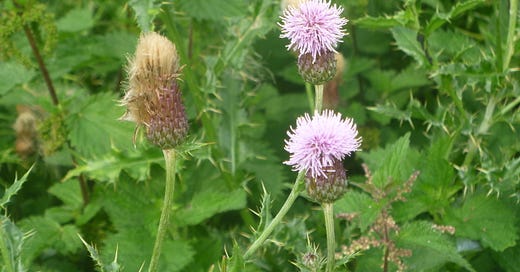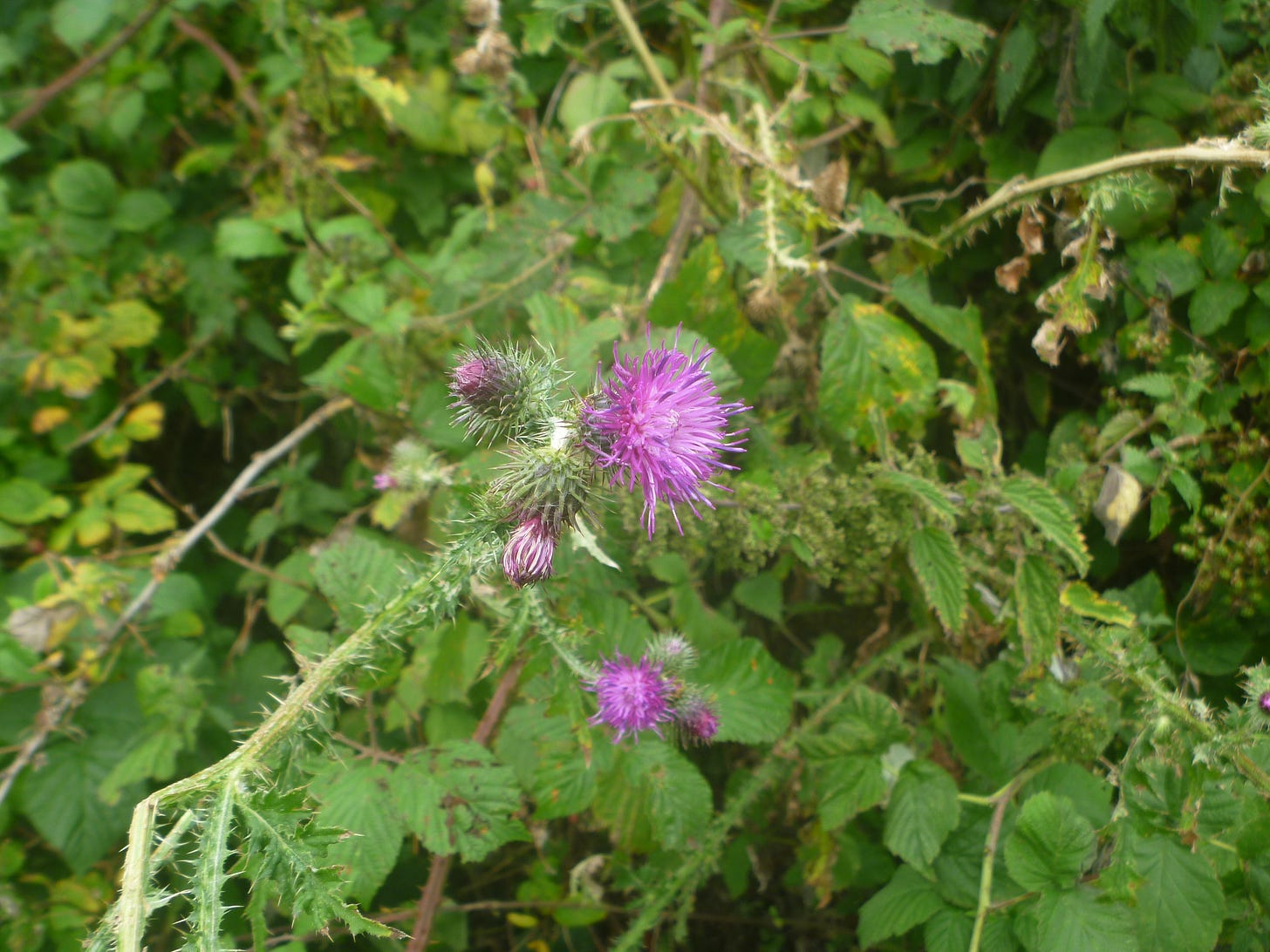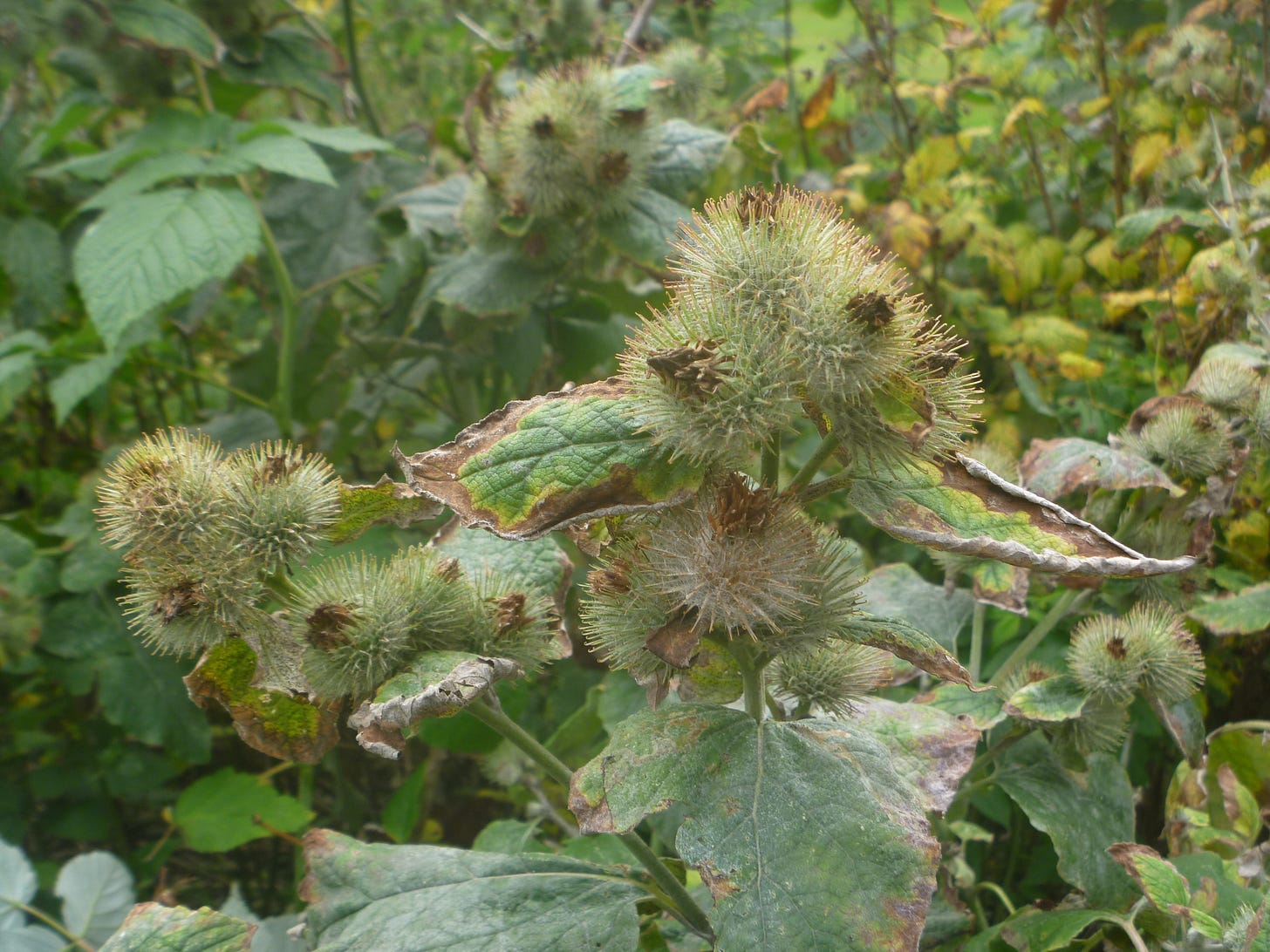Using your love of nature to help conservation
Some thoughts on the benefits of wildlife recording
In previous posts I've talked about butterfly surveying and the wildlife surveys I did a few years ago in Edinburgh's council managed cemeteries. In both cases, the survey results feed into recording wildlife and then further on feed into management decisions relating to how best look after the sites to benefit both nature and people. In this post, I want to talk in a bit more detail about wildlife recording itself.
You can, of course, enjoy nature without knowing the names of every species you find. In fact, the enjoyment comes first, you're probably not going to be interested in finding out more about nature, if you're not enjoying spending time out there. Time in nature though is likely to make you curious, and as Ruth Bradshaw discusses in her post below, there are lots of good reasons to find out the names of the wildlife you see.
You may be content to just enjoy the colours of the flowers, or you may think 'oh that's a thistle!'
then you may notice that this other plant, obviously also a thistle, is different and has very spiny stems
so that may get you curious to find out about the different species of thistles - this page on the Nature Spot website gives a guide to the most common species of thistles found in Britain - though be warned there are several other species of thistle! (So my first photo shows a Creeping Thistle and the second shows a Marsh Thistle).
You may then see this plant, which looks superficially like a thistle.
Although this is closely related to thistles, it’s actually Lesser Burdock. Nature is full of identification challenges like these, that put some people off, but which others find fascinating.
For your own personal enjoyment, it's up to you how much you want to find out and how far you want to go in identifying everything you see in nature! And don’t let people make you feel guilty for being happy with only basic knowledge. But if you love nature, you may decide that recording wildlife would be an enjoyable way to use your enthusiasm to help conservation. If that's the case, you definitely need to know exactly what you're seeing. My blog includes a useful list of all the online identification guides I can find for nature in the UK (let me know if you find any I've missed!) It's worth highlighting I-Spot - an online community where you can share wildlife sightings and get help from other users on issues of identification. So if you've seen a beautiful butterfly you don't recognise or a puzzling lichen, that's the place to go for help.
There are all sorts of useful wildlife related apps you can download to a smartphone, that can help identify nature for you. One of the best known is Merlin, which can help you identify the birds you see or hear. I think there's a certain satisfaction to working it out yourself though, plus the apps don't always get it right. If you want to find out more about nature apps, read Zabby's post below
If you're not using an app to help you identify species that you want to record, try to take notes immediately. Photos help a great deal, particularly if you're not sure what the species is or if it is an unusual species for the area. Many recording schemes require photos to confirm any sighting, especially for less well recorded or more difficult groups of species, such as hoverflies, so get into the habit of taking photos of everything you see. The photos don't need to be brilliant, but they should show all identifying marks of the species. You should also note the grid reference of the place where you saw the species, most smartphones can tell you your Grid Reference. It's useful to note other details, such as the habitat and weather conditions.
Where do you send your wildlife records? If you're using a smartphone, the easiest thing is to use i-record, where you can download your sightings while you're out in the field. The site then will share your records with the relevant wildlife recording schemes, such as your local bird recorder or the UK hoverfly group.
If you're old school, like me, then in the UK, the best thing to do is to send your records to your local biological records centre. In Edinburgh, south east and central Scotland, the local records centre is The Wildlife information Centre (TWIC) based in Vogrie Country Park outside Edinburgh. TWIC collects wildlife records, shares them with individual recording schemes and uses them to: “support development and woodland planting proposals, screening of planning applications, provision of data to develop and implement Local Biodiversity Action Plans (LBAPs) and coordination of Local Biodiversity Sites (LBS)/ Local Nature Conservation Site systems (LNCS).” The centre also organises recording expeditions throughout the area.
If your interests are focussed on specific groups of organisms you may want to join in with a specific recording scheme. The best-known in the UK is Birdtrack, an online bird recording site, where you can enter records of the birds (and dragonflies) you see. These records are then sent to the local bird recorder and the British Trust for Ornithology. Birdtrack is also currently asking people to record dead birds so it can track the spread of avian flu. (It's very important not to touch dead birds, but take a photo and record where you've seen the bird).
You may wonder about the actual benefits of recording the wildlife you see. In these days of declining species and increasing pressures on wildlife and wild places, it’s vital for wildlife sightings to be recorded. Specific benefits include:
* Information on where particular animals and plants are found makes it easier to plan conservation priorities;
* knowing which areas are important for rare or unusual species enables us to challenge inappropriate developments;
* knowing how species distributions change over time can help to monitor climate change;
* information on how animals and plants respond to conservation work can inform wildlife managers about appropriate future work;
* knowing where invasive species are, means we can better prevent their spread;
* people involved in wildlife recording become more knowledgeable and enthusiastic about wildlife and more likely to pass this knowledge and enthusiasm on to others.
In Scotland, Biological Recording in Scotland Campaign (BRISC) encourages and supports the recording of wildlife and wildlife habitats across Scotland through local record centres, recording groups and individual recorders. Their website also includes a useful list of resources for people interested in recording wildlife.
So, if you are interested in nature and want to contribute to knowledge around nature, wildlife recording is a great place to start!
An Amazing Example of Successful Wildlife Conservation in Action
Join In
Run by the Scottish Badgers charity, Get Sett is a project recording Scotland's badgers. The project is highlighted in this recent post from High Life Highland Rangers
Royal Society for the Protection of Birds are currently fundraising to help swifts, a summer visitor to the UK, that has been declining for years.
Interesting articles
How should the Edinburgh Fringe respond to the climate crisis? An actor and a playwright discuss from the Scotsman Newsroom.
Community gardens springing up in alleys in Manchester, from the Guardian.
Good news for Spoonbills in the UK from the RSPB (Royal Society for the Protection of Birds.)
Interesting Project from Scottish Libraries
Nine Scottish Public Library Services provide free access to equipment to repair, reuse, and upcycle everyday items through Lend & Mend Hubs. Find out more on the Scottish Library and Information Services website: https://scottishlibraries.org/projects/lend-mend/
I’ve been Published!
I’m delighted to have a haiku in the bird themed issue of Haiku Girl Summer.











This is a great overview of the value of wildlife ID and how to do it. Belated thanks for including a link to my post.
I’ve lived in various rural settings for most of my life and have tended to allow myself to get absorbed in the wider landscape. Time to pay more attention to detail I think. Lovely post, Juliet.